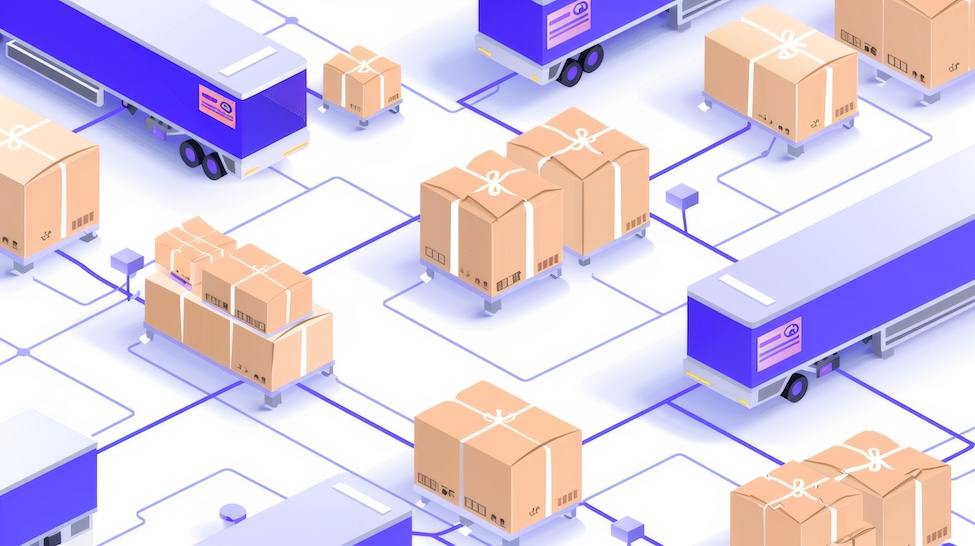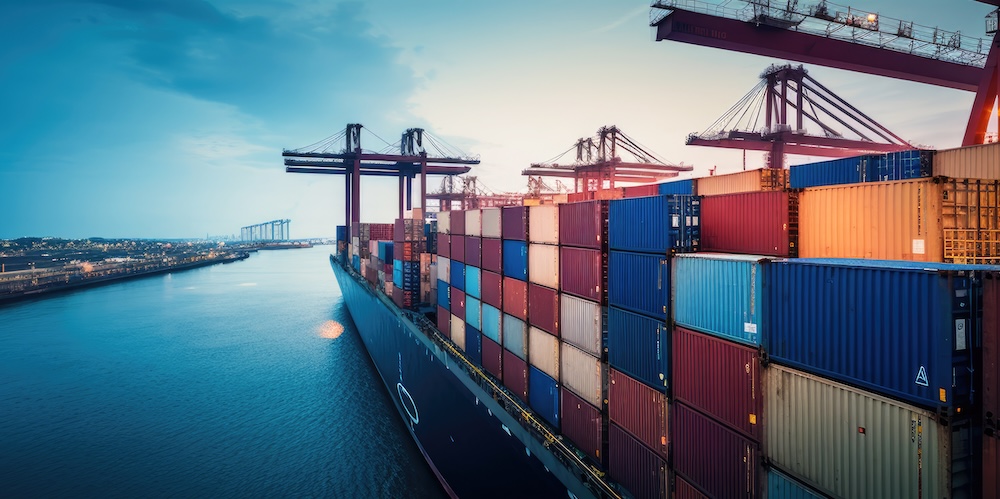Biggest Drayage Challenges and Trends in 2023

Last Year’s Challenges and 2023 Forecast
2022 was a whirlwind for anyone in logistics. Supply chain challenges continued to rock an industry still reeling from the Covid-19 pandemic. Around the world, businesses struggled to make deliveries on time in the face of rail strike threats, warehouse scarcity, and other issues.
While some problems, like the rail strike threat, have resolved, other concerns remain.
It’s uncertain what impact these issues will have on the “first mile,” or drayage, portion of the supply chain in the coming year.
Drayage: Critical “First Mile” Delivery
Drayage is the process of transporting freight by truck to or from an inland port, a seaport, or an intermodal terminal. Also called “first mile delivery,” drayage carriers play a vital role in ensuring timely delivery.
Clear Ports, Efficient Drayage
When ports run smoothly, the drayage trucks do, too. Last year, major U.S. seaports, including Los Angeles and Long Beach, experienced significant congestion, due to Covid complications, geopolitics, and the hint of recession. These backups lead to bottlenecks in drayage service as well.
The Global Port Tracker reported that West Coast Ports ended 2022 with a 7.5% decrease in loaded imports and an 8.6% decrease in loaded exports. These port disruptions and delays lead to surging drayage rates in 2022.
Also, threats of a strike by the International Longshore and Warehouse Union (ILWU) also provided a grim outlook on the docks. This congestion and fear of labor strikes caused many companies to divert shipments to East Coast ports, many of which saw their most productive years in recent memory.
Are the Ports Still Congested in 2023?
2023 brings continued uncertainty about port congestion. Yet, experts forecast a rebound in 2023, with the Global Port Tracker predicting West Coast Port activity to return to pre-Covid levels.
And, the ILWU avoided a strike last year. Market analysts continue to watch ongoing labor negotiations for potential future disruptions. While these issues seem to have improved for now, changes to the trucking industry, especially in California, will have major impacts on drayage services this year.
New Drayage Truck Regulations in California
Starting on January 1, 2023, all drayage trucks must be in compliance with California’s Truck and Bus Regulation. This means that all drayage trucks working in the state must run on a diesel engine built after 2009. Trucks must register compliance with the California Department of Motor Vehicles.
Document compliance electronically to avoid fines. For more information on how to comply, contact the Diesel Hotline by email [email protected] or by phone (866) 6-DIESEL.
California Predicts Drayage Shortage
According to customs brokerage firm J.M. Rogers, California could experience a 2023 drayage shortage due to these new truck engine requirements. Demand for new truck parts is expected to outpace supply, and truckers will be unable to buy the parts needed for compliance.
Drayage Trends in 2023: Efficiency and Transparency
Port delays, union unrest, and diesel prices are all outside factors that will impact drayage truck delivery in 2023. At the same time, logistics companies are working hard to provide solutions to make deliveries more efficient.
To combat the latest round of economic uncertainties, drayage carriers are looking to provide more efficient daily operations for their customers. For example, carriers are utilizing more technology and improved digital platforms for better security and efficiency. Each of these aspects can help to keep drayage costs stable while maintaining a steady supply chain.
To guard against cargo theft, many companies are investing in new technologies to secure their shipments. Many carriers are using radio frequency identification (RFID) tags to track cargo. Also, companies are developing more sophisticated Transportation Management Systems (TMS), some integrating with Warehouse Management Systems (WMS) to provide full transparency in planning and executing deliveries.
AmerTrans Logistics: Practical Solutions for Your Drayage Challenges
At AmerTrans Logistics, we offer full supply chain support, from drayage service to compliance and more. We’ve been in business since 1984. In that time, we’ve built relationships with our customers and with our supply chain partners. We have a deep network, and we’re dedicated to sourcing and managing the best drayage carriers for your job-we don’t have any financial incentives to push you towards a specific company.
We see our customer relationships as partnerships. That means we start by listening to your goals and your challenges. Then, we’ll make the arrangements you need to keep your supply chain running efficiently. Whether it’s scheduling drayage trucks or making sure they’re compliant, we’ve got you covered.
Finally, our cloud-based technology will help you to track your shipment in real time. Our integrated digital systems provide you with up-to-the-minute information on transportation and warehousing. Our TMS integrates with our WMS-and even can connect with third party systems-to provide full transparency for shipments. And, these systems are easily accessible. It’s all available from anywhere with an internet connection.
Give us a call today. We’ll create a customized, scalable plan just for you. Together, we’ll solve your bottlenecks and unexpected drayage disruptions.
Related Articles
General
Inbound Logistics Explained: Processes, Benefits & Best Practices

Efficiency is the cornerstone of business success in today’s competitive environment. Inbound logistics, a critical component of supply chain management, plays a pivotal role in determining a company’s operational effectiveness and overall performance. Inbound logistics encompasses the processes involved in receiving, storing, and distributing raw materials, components, or finished goods from suppliers to production facilities […]
Read MoreGeneral
Freight Shipping vs. Standard Shipping: Understanding the Difference

Freight shipping stands as a cornerstone of modern logistics, propelling the global economy forward through the efficient movement of goods. This essential component of commerce encompasses the transportation of large quantities of products, distinguishing itself from standard shipping methods in scale, complexity, and significance. Understanding freight shipping is essential for business owners aiming to optimize […]
Read More
